ctaylo360860
Senior Member
- Location
- colorado
- Occupation
- ME
Hi I'm hoping i can get some help with clarifying the violations of an existing install and gain some more understanding of 502 hazardous locations class II division 1 of the nec.
The company I am work for has an existing motor for a sweep auger wired inside of a grain bin that’s filled with corn. The auger doesn’t run or receive power until the motor is exposed and the bin can be entered into. there are no prints or classifications that I'm aware of , but in my opinion this still seems to be a class II division 1 environment. see photos 1-6
here are the violations I found with the previous electricians install.
1. the current install has motor that doesn't seem to be rated for class II division 1 environment and is a violations of 502.125(a)
2 the motor has a male L19-30p plug installed on it, they then run 14-4so cord into the bin with a L19-30p plug that is hooked to a starter on the outside of the bin.
this seems to violate 502.140 (b)(4) as the so cord is terminated using normal so cord connectors and need to be listed for the location. also 502.145 as the twist locks are not listed for the class II division 1 environment see photos 1-6
if I understand nfpa 60 chapter that is is the owner/operator of facility with potentially combustible dust shall be responsible for determining whether the materials are combustible or explosive, and if so, for characterizing the properties as required to support the dha (625:5,11
my plan is to order a new motor that is meant to be inside of a class II division 1 environment
run so cord to the new motor using listed dusttight so cord connectors and get the twist lock outside of the class II division I environment. the fittings im looking at using may not be this exacts size gut should have the same rating. see photos 9&10
photos 7& 8 are from the manufacturer and are showing how they have the existing set up wired. the only difference is that they have male twist lock plugs installed on the motors and are running female twist lock receptace into the bin and pluging them in, instead of running the so cord to the motors j box.
I hope this makes sense i wrote this at the end of the day in a hurry. if there are any questions please ask and i will clairify my best. again appreciate any and all helps thanks !
The company I am work for has an existing motor for a sweep auger wired inside of a grain bin that’s filled with corn. The auger doesn’t run or receive power until the motor is exposed and the bin can be entered into. there are no prints or classifications that I'm aware of , but in my opinion this still seems to be a class II division 1 environment. see photos 1-6
here are the violations I found with the previous electricians install.
1. the current install has motor that doesn't seem to be rated for class II division 1 environment and is a violations of 502.125(a)
2 the motor has a male L19-30p plug installed on it, they then run 14-4so cord into the bin with a L19-30p plug that is hooked to a starter on the outside of the bin.
this seems to violate 502.140 (b)(4) as the so cord is terminated using normal so cord connectors and need to be listed for the location. also 502.145 as the twist locks are not listed for the class II division 1 environment see photos 1-6
if I understand nfpa 60 chapter that is is the owner/operator of facility with potentially combustible dust shall be responsible for determining whether the materials are combustible or explosive, and if so, for characterizing the properties as required to support the dha (625:5,11
my plan is to order a new motor that is meant to be inside of a class II division 1 environment
run so cord to the new motor using listed dusttight so cord connectors and get the twist lock outside of the class II division I environment. the fittings im looking at using may not be this exacts size gut should have the same rating. see photos 9&10
photos 7& 8 are from the manufacturer and are showing how they have the existing set up wired. the only difference is that they have male twist lock plugs installed on the motors and are running female twist lock receptace into the bin and pluging them in, instead of running the so cord to the motors j box.
I hope this makes sense i wrote this at the end of the day in a hurry. if there are any questions please ask and i will clairify my best. again appreciate any and all helps thanks !
Attachments
-
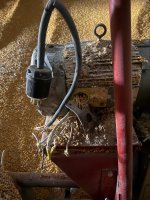 kirk11.jpg816.9 KB · Views: 11
kirk11.jpg816.9 KB · Views: 11 -
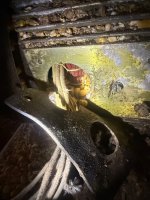 kirk8.jpg779.1 KB · Views: 10
kirk8.jpg779.1 KB · Views: 10 -
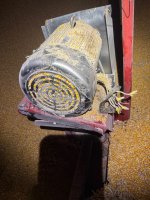 kirk 7.jpg1.6 MB · Views: 9
kirk 7.jpg1.6 MB · Views: 9 -
 kirk 1.jpg437.2 KB · Views: 9
kirk 1.jpg437.2 KB · Views: 9 -
 kirk6.jpg1.8 MB · Views: 9
kirk6.jpg1.8 MB · Views: 9 -
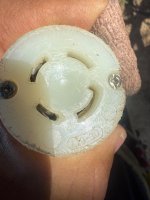 kirk12.jpg590.6 KB · Views: 11
kirk12.jpg590.6 KB · Views: 11 -
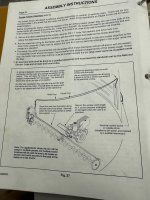 kirk 2.jpg752.5 KB · Views: 22
kirk 2.jpg752.5 KB · Views: 22 -
 kirk 3.jpg809.3 KB · Views: 11
kirk 3.jpg809.3 KB · Views: 11 -
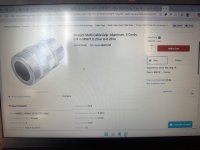 kirk4.jpg1.4 MB · Views: 9
kirk4.jpg1.4 MB · Views: 9 -
 kirk5.jpg1.6 MB · Views: 15
kirk5.jpg1.6 MB · Views: 15

